Building and installing art in Black Rock City can be challenging. Over the years resources available to artists have expanded and been refined and currently the Art Support Services (ASS) assists artists in their endeavors out here, but that kind of support didn’t always exist.
I’ve been talking with some of the folks involved in what would eventually become ASS and you hear a lot of stories, some that don’t all agree entirely or have somewhat different interpretations of whatever the facts may have been, but the gist of it is, in the olden times of the nineties and early aughts, DPW had heavy equipment to build the Cafe and Center Camp and to eventually build the Man Base. Evidently the group “Aftermath” built Cafe, ran transport, structural safety and heavy machinery in Black Rock City.
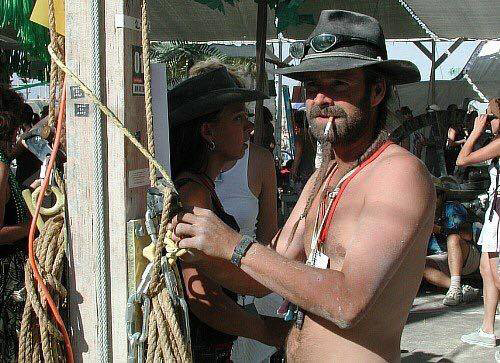
Spyral was telling me that when he was the Carpentry Lead on the Cafe when Rod Garret first designed what is today the Center Camp structure, they looked at the plans and weren’t exactly sure how they were going to put it together on playa. Simon Clark was a heavy equipment operator working for Aftermath and told them it was simple actually, just do this, do that and we’re good, so he was volunteered for the job. Simon was also on the art review committee so he had an idea of what heavy equipment might be needed on playa. Simon became a major force in getting heavy machinery to the artists.
Simon says, “Everything that became free from construction of the Cafe and Man Base was then re-routed to art. David Best would bribe us up front with whisky and duck egg scramble and tea, but it was just to be priority. We never said no to an artist. HEaT came from the attempt to formalize the process of getting artists support.”
Back then, if artists needed assistance from heavy equipment it was a handshake process with a lot of finding someone who had time after constructing the Cafe and Center Camp, and knowing what you needed then waiting for them to arrive. Some people say offers of whisky were given as incentive to get assistance, others disagree. Others say that in reality, an almost most locked in way to get assistance was to get a pretty girl in shorts with a bottle of booze to go make your request for you and it would almost always happen.

Panther started working at the ARTery in 2000 as a volunteer when the ARTery name was coined as part of that year’s theme “The Body”. He knew Simon and some of the DPW operators and was doing all these logistical things for the ARTery. He described ASS as an organic offshoot of what he was doing for the ARTery so he naturally became this voice between the artists and Heavy Machinery. By 2003 heavy equipment and transpo had fully established a link between Art and Support.
The name “Art Support Services” came from a single page document that listed DPW people and resources Crimson gave to Panther titled “Artist Support”. Crimson told Panther, here are the skills and the machinery we have available then asked, “Can you do something with this?” He added the “Services” part and came up with a Gantt Chart of what resources Burning Man had versus what the artists would need each year. As artists checked in at the ARTery, they would register with staff transcribing in all manner of notebooks, then receive information they needed, then before being placed, they would be handed off to a very busy Panther wearing two radios who would co-ordinate their heavy machinery and other needs to get up and running.
As that job took root, Panther gave tasks to ARTery staff and eventually a crew grew. All aspects of building out here, such as unloading at their site, trenching, cranes and other HEaT equipment, wood and fuel, fire related assistance, working with Gate and Rangers and all aspects of making it easier to build art in this punishing dry lake bed, now had a defined funnel to flow through.
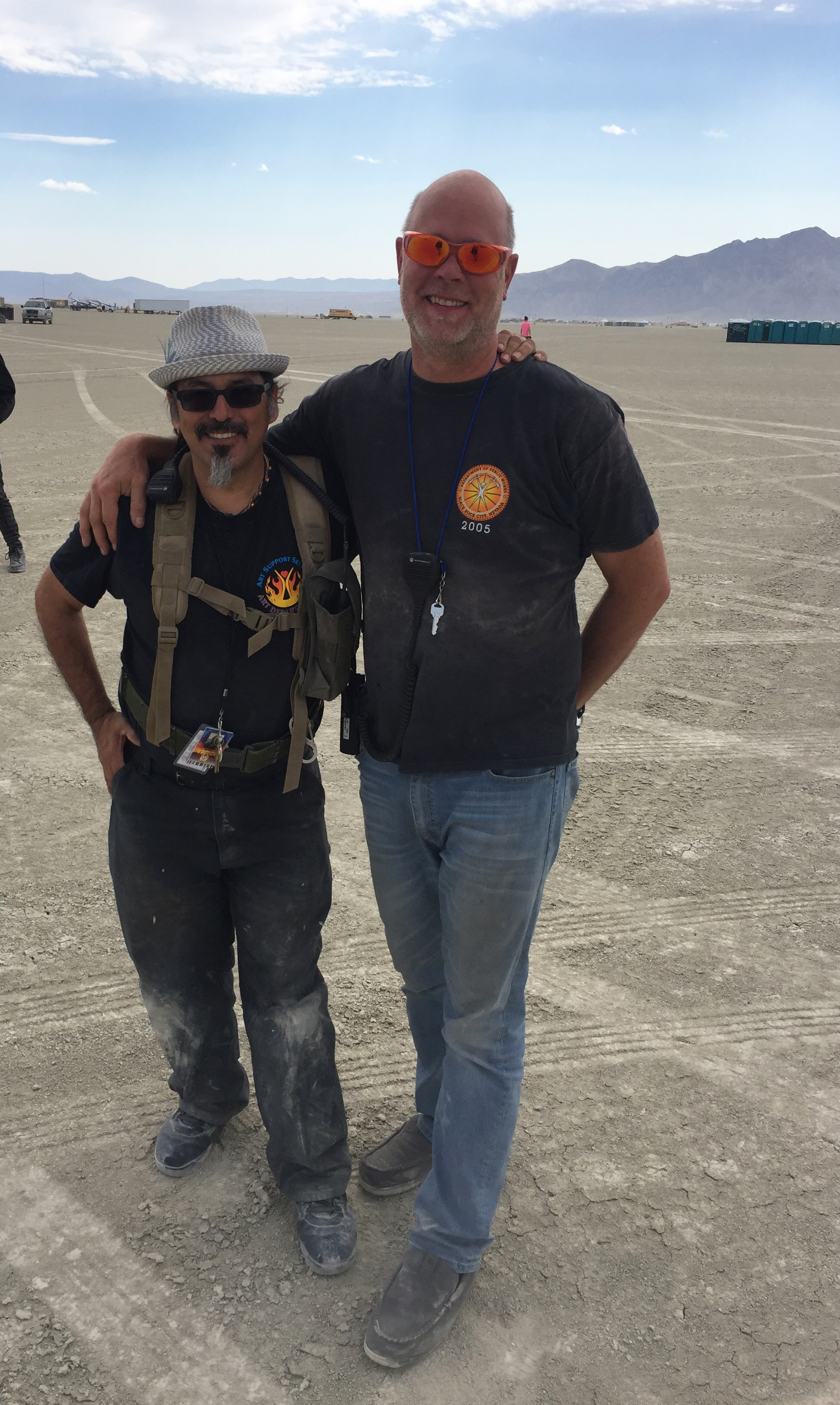
A couple things happened around 2002 – 2003 that affected the rise of ASS. As early as the nineties burn scars had become an issue. Crimson and others mobilized and art was suddenly to be burned on platforms then decomposed granite was introduced and ASS became integral to getting Burn Scar prevention in place. Also, in 2003 Zachary Coffin brought the “Temple of Gravity” out to the playa and with him came Richard Scott, aka Big Stick, who moved big stones around the world with Zach. Big Stick ended up helping with the Keyhole piece that year and helped lift some pieces on Center Camp and eventually would become the head of HEaT thereby adding even more artist specific experience to that team.
Months before the event, Panther met with artists, as Simon had, to asses their needs and to be aware of what would be needed on playa. His Gantt Chart helped and what information was captured was analog, written on paper or kept in Panther’s brain. The ASS crew grew from 2005 to 2008 with the advent of Honoraria Art that replaced the concept of Theme Art and made resource allocation more defined. After the first years building up ASS, Panther had brought together a crew of eight people that grew to twelve by 2011. Under his tutelage, with resources available to artists, the number of art projects on playa grew and the size of those actual installations was becoming grander.
Panther left ASS in 2011 and Gary Gregory took over for a year as the ARTery transitioned over to a new AssMan, Ben aka Bill Murray in 2013.
I sat down with Ben on Build Week Tuesday as thunderstorms were moving in from Deep Playa around 8:30 and D in Black Rock City to hear about what he’s done with ASS since taking over and what direction it’s headed now. When he became AssMan, Ben bumped the team up to 25 people and each year he’s been adding folks. Ben says, “It’s an incredible amount of work. 300 to 340 projects. 180 of those usually use ASS and 20 percent of the projects usually need all the things. Those things involve trenchers, crane lifts, booms, VR (variable reach lifts)” Plus they need fuel, water and other assistance. All projects require placement and most require heavy equipment for unloading once on the playa.

Ben was construction manager for The Man before coming on to lead ASS. He told me “Knowledge is a big part of Artists Support Services, because we need a lot of information and we track it all. The most fun part of it is going out in the field and talking with artists.” What used to be done with slips of paper and Panther’s brain is now entirely digital database sharing across departments.
The Tech team has been working for years to integrate systems to replace the old analog way of checkin for artists and now they’ve integrated with other departments. “Year after year after year, the Tech team would use us as a guinea pig and they took us from Filemaker into Salesforce and now Damien is an expert in programming for Fulcrum. This is sort of the pinnacle year with all that data working together.” It’s working beautifully because the Tech team is awesome. During Build Week, the playa is a huge construction zone. Each individual art installation has its own needs and that coordination happens using Fulcrum, an app used everywhere on job sites. It allows for GPS location, scheduling of resources, passing of photographs of art so ASS and deliveries know what they’re looking for when they go out there.
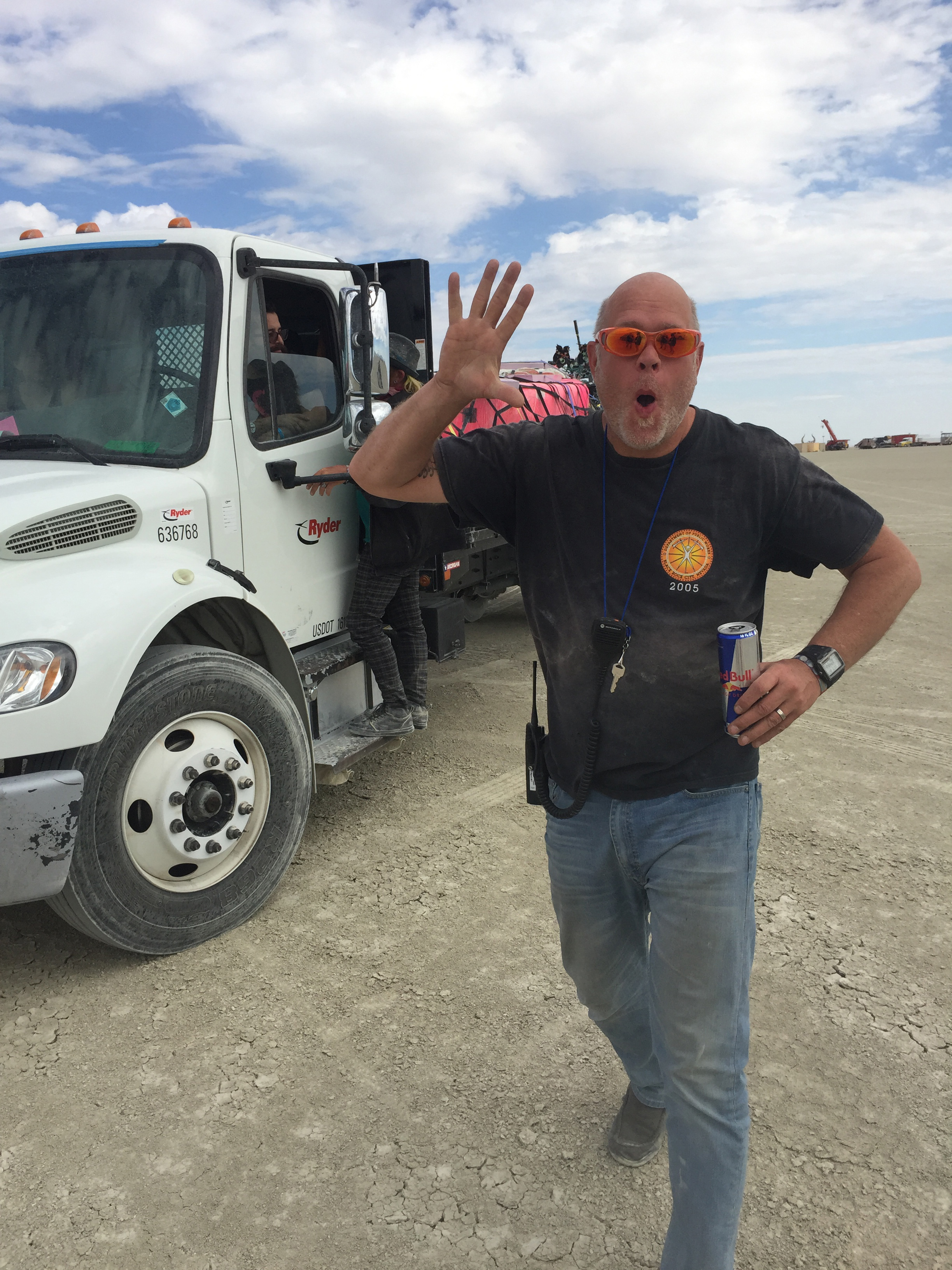
Ben told me how the ideas came together. “HotSpot, who was on ASS in the past, went over to Fuel and she integrated Fulcrum into their process. So that is where the data integration started. Then No Dice from Water saw what we were doing with Fulcrum and Fuel, and said this is bad ass. It’s a pain to find a water tank at Burning man. So we started marking all the assets for fuel and water.” Now Fulcrum is used for everything from HEaT to wood delivery to reporting any incidents with Hazmat or water spillage for that required Federal reporting.
Also the whole process of getting art onto the playa and communication with the trucks delivering projects and having heavy equipment available for offloading the art has been streamlined. Gone are the days of waiting at the ARTery for people to show up.
Ben also worked to build ASS to expand. He said, “I knew there was a bottleneck with ASS. They needed a database and a desk and an office. Little things like that. We made the ASSHole (a dedicated space for the team), got a table, little things that make a difference, then we started recruiting people.”
His team has grown to 70 people who all train for weeks before the event online twice a week. Ben says ” We have six weeks of training before the event, three hours a night Monday and Tuesday at a FUSE meeting online. We have training materials. We starting making a manual that first year and now our manual is 175 pages. Squad leaders take on sections, if someone likes a section they can own that and write it. So if you are interested in delivering firewood, you can own that.”
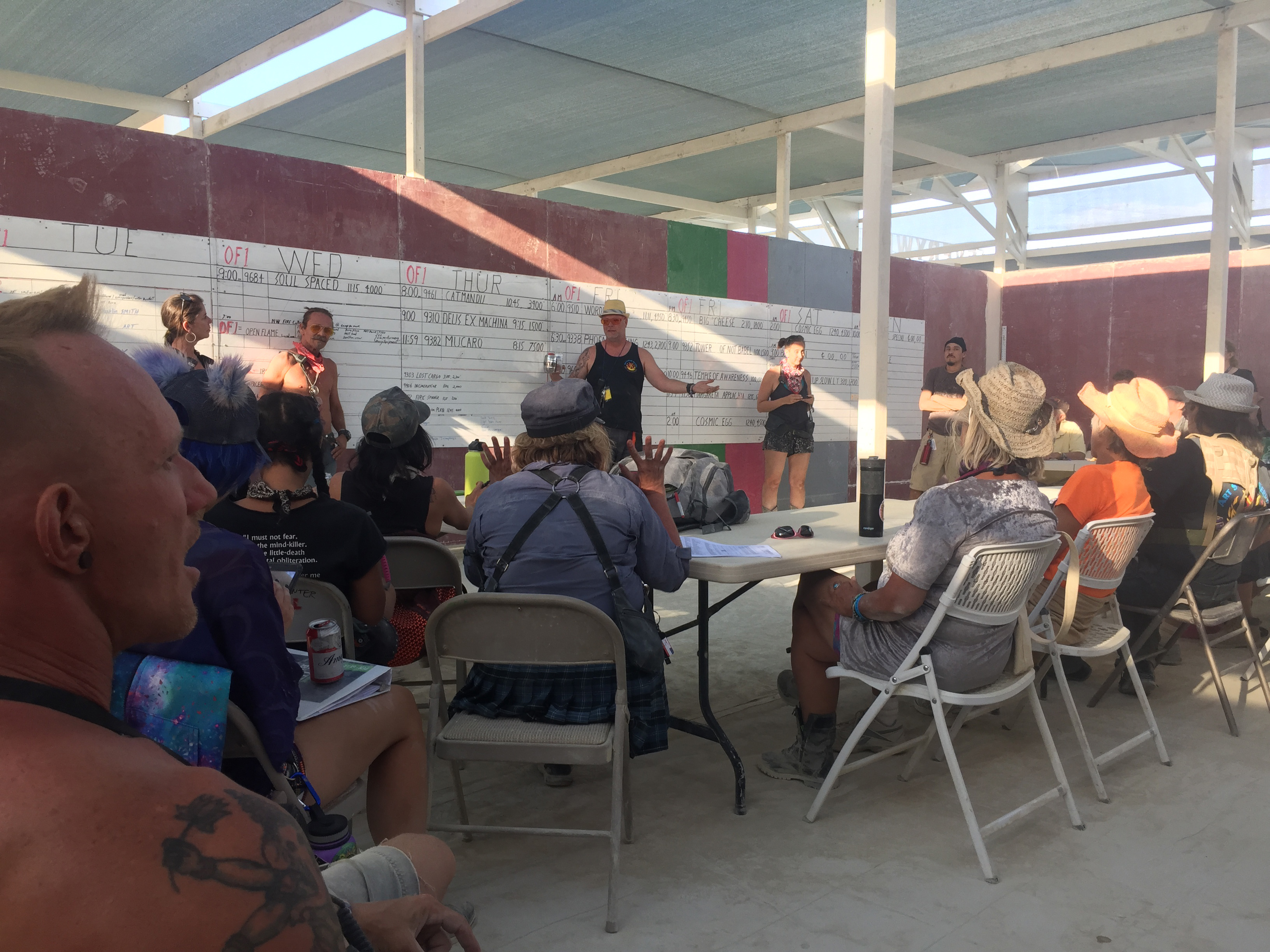
Knowing how all the systems work to support artists isn’t something you do without knowledge and training. Ben says doing field work is the most fun because you’re helping artists out in the field, but that “ASS help desk is actually the hardest place to work. When artists come there they’re usually pretty exhausted and want something now. They need something so if you don’t know what you’re talking about and have answers to what they need they get really frustrated and it’s just a real hassle if you don’t have people who can take care of them.”
At 2017 ASS is at a point where we’ve never had such coordinated delivery, offloading, daily support and knowledge of what they actually need. It’s all a combination of the learnings over the years, trial and error and technology.
Another interesting evolution happening now is an emphasis on Engineering. As projects become larger, making sure they don’t collapse or otherwise fail becomes more important. Janky is great and revered and will always be part of Burning Man, but as Ben told me, “CAD drawings are not engineering drawings.” The artists are responsible for their own engineering and are encouraged to check out Building Art Safely on the Burning Man web site where there are criteria for each size and height with a lot of language on making your structure safe.
Ben says, “It’s pretty rare that we ask for drawing to be stamped, but now that Burning Man facilitates a lot of public art, and some of these artists are getting kinda famous, they see the potential for their art being installed publicly.”
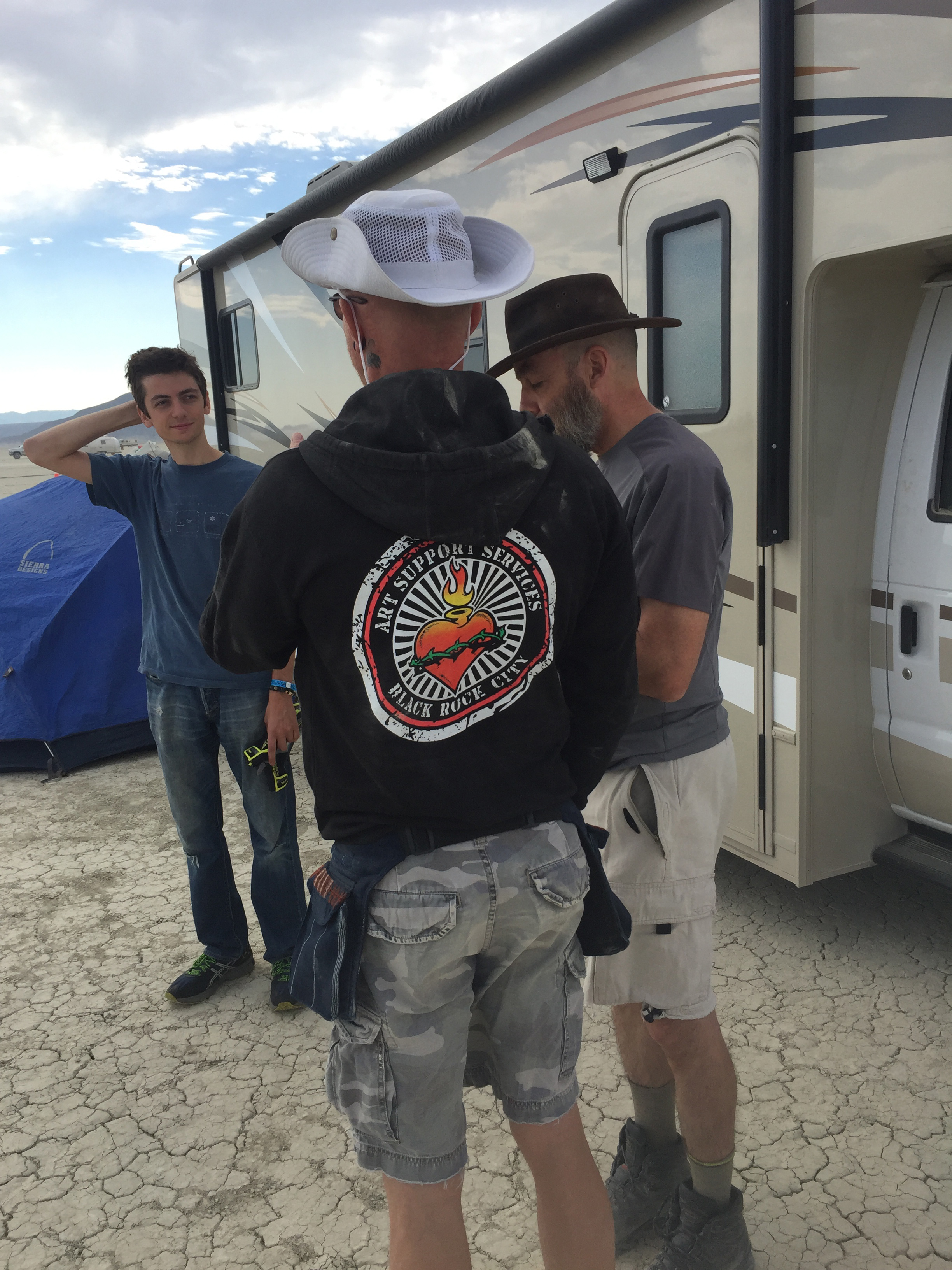
“Tree of Tenere has fullt stamped drawings and you go look at the structure of it and that thing is fucking professionally made. It’s designed to have its grand opening and test run at Burning Man, but because all the engineering is done, a municipality can see that and say, yea we have 100 grand and we can install it. Can you keep that here for a year or whatever.”
Peter’s done it, Marcos has done it. Flaming Lotus Girls. The list goes on and on.
“With pushing the engineering onto the arts I’ve seen Crimson working really hard with Kim, it’s a huge program. If you’re building a nice piece of art that’s substantial, they work to integrate you into their network, to help get these things installed.”
With all the tools available to artists now, from support at Burning Man to crowdsourcing for funds and volunteers to help build their art, things that come out to the proving ground of Black Rock City then enter the mainstream afterwards, are spreading the Burning man ethos beyond the event.
Burning Man isn’t 20 thousand people anymore and it’s not 30 art projects. We’re creating an infrastructure where the art has grown bigger in size and scope. That wouldn’t be possible without an infrastructure to support it. As citizens of Black Rock City, we’ve become accustomed to art so grand and so mind blowing in scale because of that infrastructure and that inspires others to try their hand at what is the perpetual artistic evolution from one price to the next, thereby hastening that progress of artistic progression you can only see in a place as unique as this.

Success is when a project completes and the artists feel that pride and relief of having pulled it off and Art Support Services has helped them get there.
Ben added that “the most rewarding thing is when, if its a colossal piece of art or any size art, you’re helping them realize what they need to do. From small to big, every artist has a story. ‘My girl friend left me’, ‘I lost my place’, ‘I got a broken elbow’, ‘I can’t finish my art.’ We’re talking with them long before the playa and supporting them with ideas, sharing our knowledge. And that’s the most interesting thing to me – helping them on that journey through the setbacks. Then they get here and there’s another two week journey, helping them get built out here again.”
In the end, the artists and Black Rock City citizens benefit and art flows from Black Rock City out to the rest of the world.

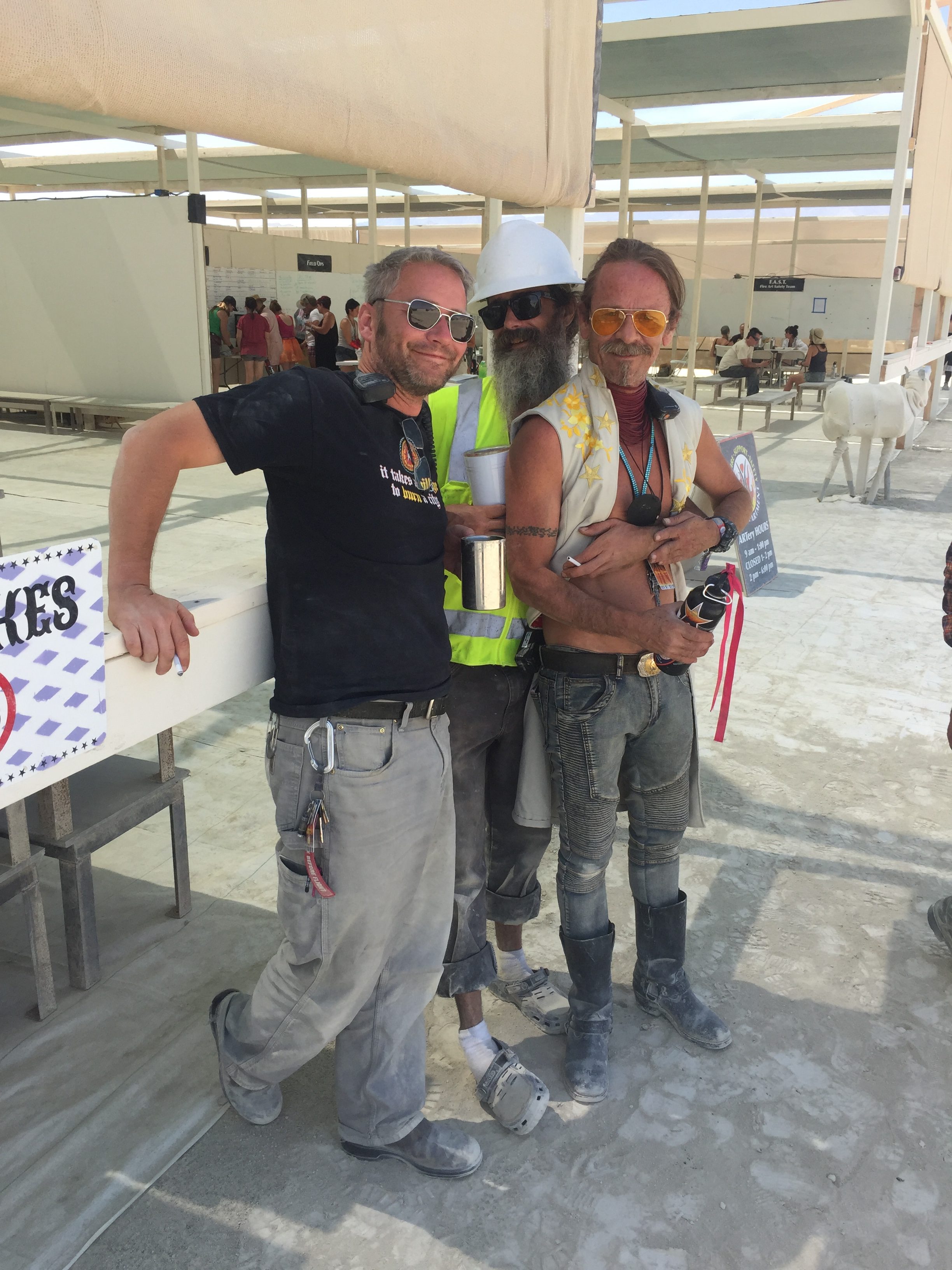

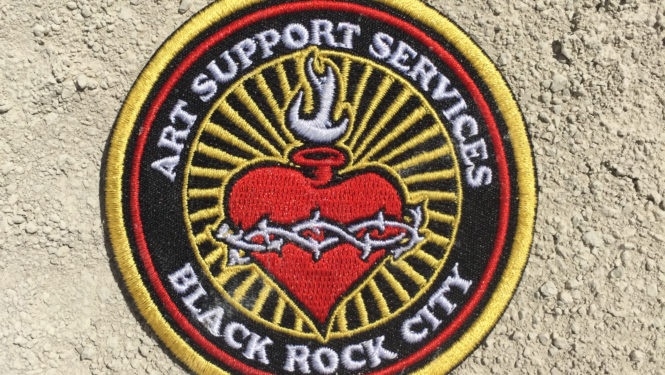
Well done, Moze! I remember when the ARTery consisted of, to the best of my memory, Crimson, myself and Scott MeKeown sitting outside a trailer with notebooks in our hands….that would be 1999, the first year of the grant program. My, things evolve, n’cest pas?
Report comment
HMmmmm
Report comment
Great read! Sounds like an awesome group of folks doing some really great work! Thank you!
Report comment
Comments are closed.